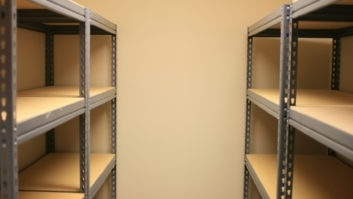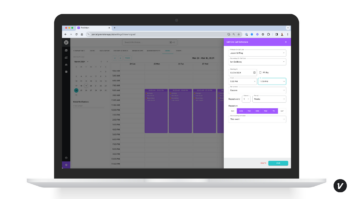Question: My accountant told me I made money this year. I asked him, “If I made money, where the heck is it?
Probably the biggest problem that faces the residential contractor is cash management. Every client I have ever had, or for that matter will ever have, faces this problem. Fundamentally, it is learning to understand the difference between the income statement and the balance sheet on a financial statement. No, it is not my intention to conduct a class in accounting here, but in lay terms I need to explain how some of this works. The easiest way to discuss this is by specific examples.
One of my client’s sales for a particular year was $3,500,000. The accounts receivable at the end of that year were $105,000. The inventory was approximately $900,000. At the end of the next year sales had grown 50 percent and were $5,200,000. In addition, the receivables at the end of the second year were $450,000, and the inventory was well over a $1,100,000. Income for the second year was around $400,000, which represented 8 percent of the sales figure.
Certainly a number in excess of the average, and by itself was excellent. However, the cash in the business was substantially less than at the end of the previous year. And, therefore, the question arose, “If I made that much money, where is it?”
What happened was a combination of events. Let’s discuss the general problems, because they seem to apply generically to our industry. the first thing to remember in business management is that profits can be generated from operations and not end up in the checkbook, but in other areas such as inventory and accounts receivable. Here’s what happened: At the end of the first year the receivables were three percent of sales, but at the end of the second year they were almost three times the previous percentage. In other words, the accounts receivable had grown $345,000.
Now, let’s look at what happened to the inventory: The inventory the previous year was $900,000, but at the end of the next year it had grown by $200,000. Obviously if you absorb your profits of $450,000 during the current year in assets that amount to $545,000 it has a negative effect on liquidity. This typically means a combination of things such as a reduction in cash and an increase in accounts payable. Remember, we’re not yet talking about the need to pay back the principal on debt or provide working capital to grow out of those profits. So you can see the answer clearly from the account. Your cash is in inventory and accounts receivable–numbers that have grown disproportional to sales.
Why would something like this happen? It’s actually a multiple of answers. First, let’s talk about receivables. Most businesses have excellent sales contracts with their clients, which require specific payments to begin work, along with incremental installments as they proceed. They also provide specific procedures for change orders and addendums to contracts. And lastly, they are very specific about when the contract is completed and what the requirements are for the final payment on the contract.
Unfortunately, even though the contracts are written, the procedures put in place and the employees instructed on what should happen when; the management of these contracts is often remiss. So, when they get to the end of a contract, instead of having a small retainer to collect, the contractor has numerous change orders or contract addendums that have not been paid, all waiting on final approval. Instead of concentrating on collecting these amounts in a timely fashion and getting the contract incidentals completed for final payment, the sales/management team is busy signing new contracts to help with cash-flow pressures.
None of this paints a very pretty picture, especially now that the amount owed by the homeowner is way more than it should be at this stage and they have substantial leverage. The worst part of all of this is that when a job finishes and there’s substantial money left on the table, the chances of having to compromise some of this money to collect the final amount are great. Now you’re dancing for numerous people, because you simply didn’t follow the provisions of the contract.
What about inventory? What’s going on here is similar. Usually the display area of most residential contractors is ever expanding, as are other capital needs such as trucks, computers, etc.
Unfortunately, this expansion is out of cash flow rather than an orderly expansion provided by long-term funds from either a lender or lessee. In the actual example above, this $200,000 increase in inventory was primarily in the display area. There were numerous companies willing to fund these display areas without using working capital that is needed in the business.
When you are a residential contractor, you often experience great swings in cash flow depending on advance payments from new contracts and progress payments on existing contracts. Bank accounts can increase dramatically and give the owner a false sense of security. Remember, though, these funds must pay for the labor, engineering, design, materials and especially the equipment to complete the contract. Once this is done, only a small amount is leftover if we are diligent in managing the project. If you use these funds inappropriately while your bank account is soaring, you will certainly be in trouble when the smoke clears. In accounting we have a term for excess receivables and inventory among other assets. We call these “non-working assets.” Working assets are making you money and, conversely, these are costing you money.
To manage your cash in a business, you must prepare a one-year income projection and a cash-flow projection for the same period. In these projections you provide for all the expansion requirements of the year including inventory growth, accounts receivable growth, new debt service for capital loans for trucks and displays, adding key employees, etc. and that’s it! Once the plan is in place, if you need to spend working capital that has not been provided for, you need to find a source other than the immediate checkbook balance. Then when your accountant shows you the profits you have achieved at the end of the year, the cash will be more in keeping with what you would expect. And he doesn’t sound like he’s from another planet.
Darrell McComber ([email protected]) is a financial consultant to the A/V retail and custom installation industry in Warrenton, Virginia.






